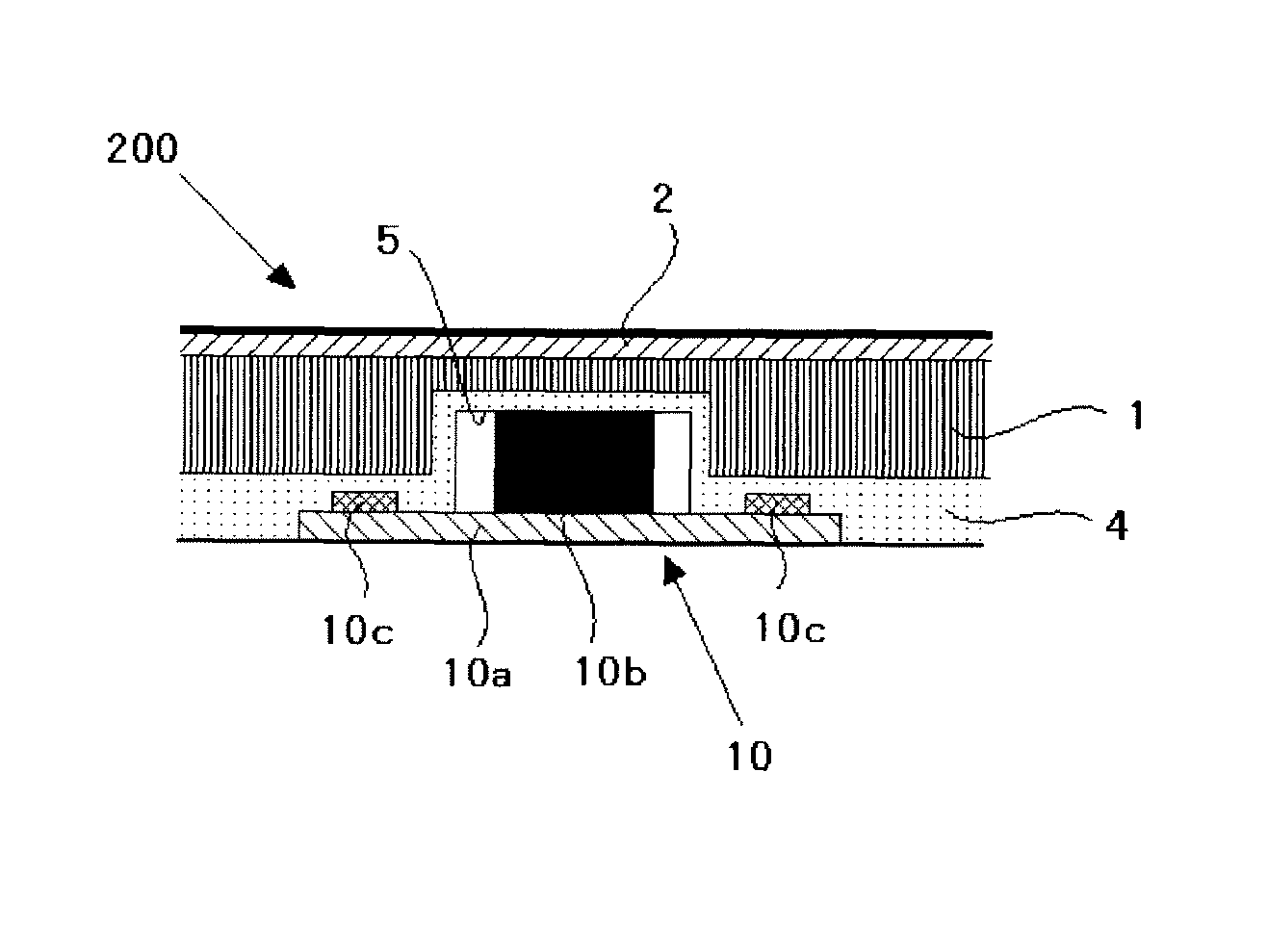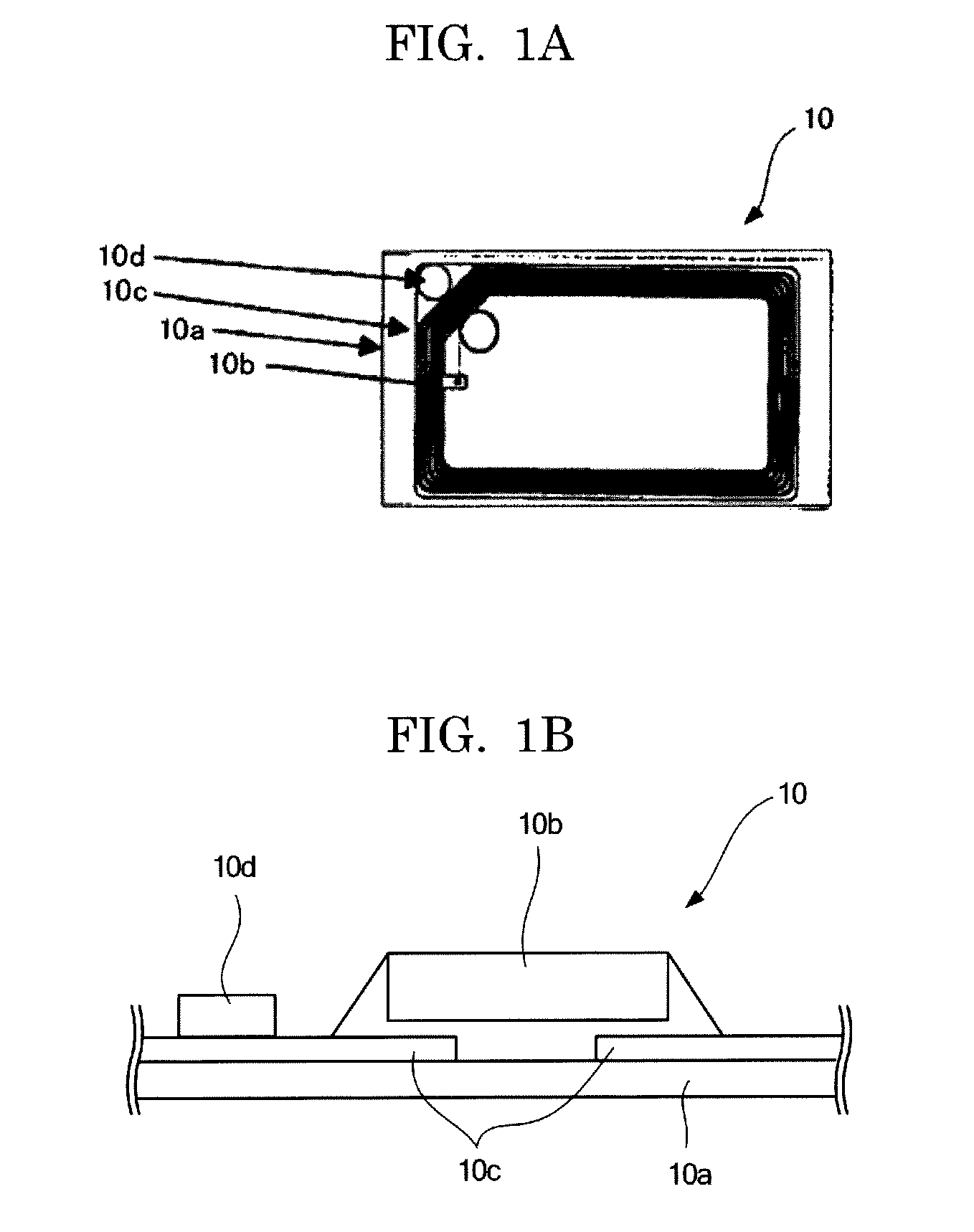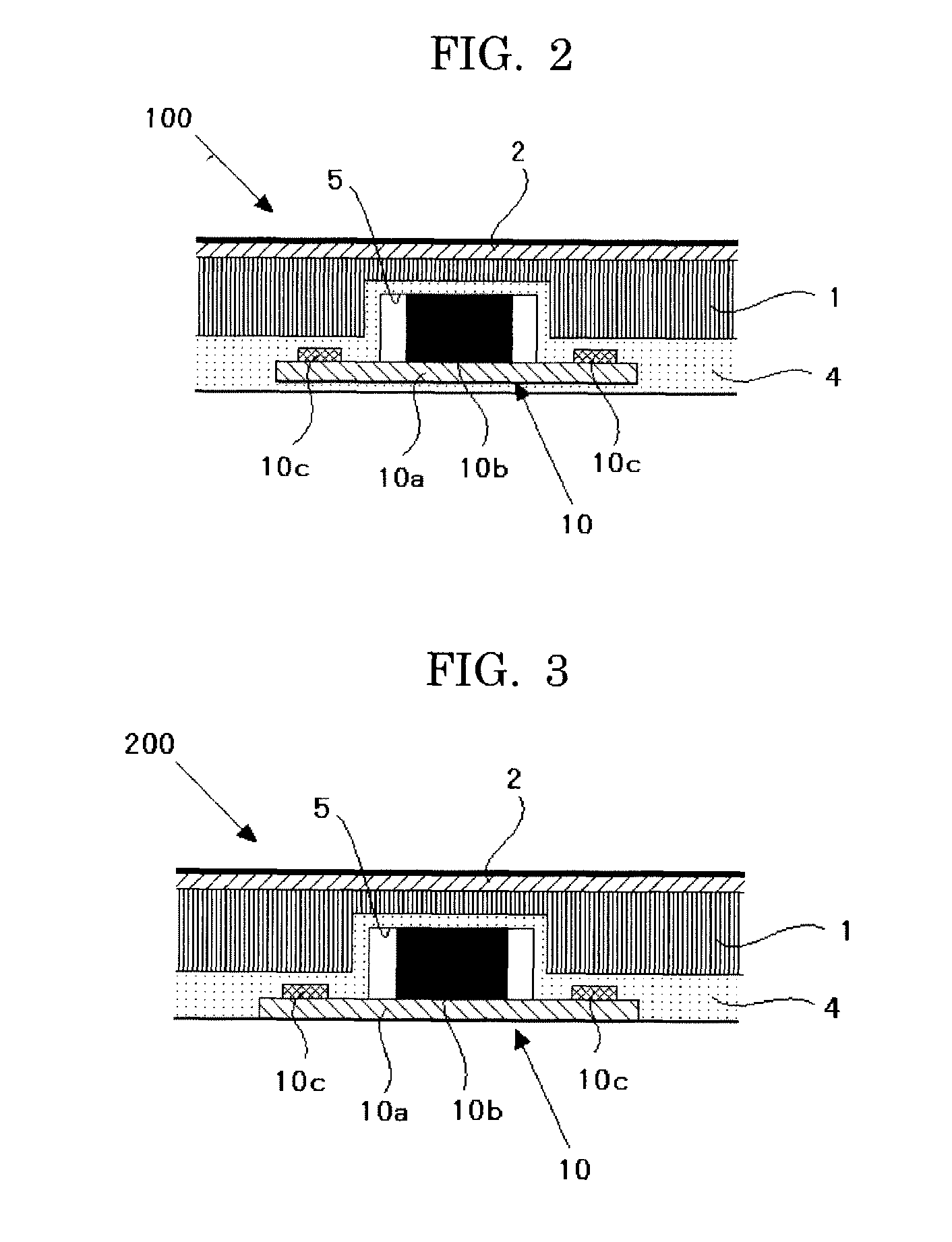Reversible thermosensitive recording medium and method for producing the same
a recording medium and thermosensitive technology, applied in the field of reverse thermosensitive recording medium and method for producing the same, can solve the problems of insufficient heat conductivity in the surface, failure of color development, unprinted image portion, etc., and achieve the effect of reducing visual unnecessary concave-convex portions, easy curling, and easy adjustment of tension
- Summary
- Abstract
- Description
- Claims
- Application Information
AI Technical Summary
Benefits of technology
Problems solved by technology
Method used
Image
Examples
first embodiment
—
[0305]As shown in FIG. 2, a reversible thermosensitive recording medium 100 of the first embodiment includes a reversible thermosensitive recording layer 2, a first sheet-shaped base 1 provided adjacent to the reversible thermosensitive recording layer 2, an electronic information recording module 10 including a module substrate 10a, and a convex-shaped electronic information recording element 10b and an antenna circuit 10c both disposed on the module substrate 10a, a first resin layer 4 for bonding the first sheet-shaped base 1 to the electronic information recording module 10.
[0306]Here, a concave portion 5 is formed on a surface of the first sheet-shaped base 1 opposite to a surface thereof on which the reversible thermosensitive recording layer 2 is provided. The electronic information recording module 10 is provided so as to insert the electronic information recording element 10b into the concave portion 5 of the first sheet-shaped base 1. Moreover, the first resin layer 4 is ...
second embodiment
—
[0317]In a reversible thermosensitive recording medium 200 of the second embodiment, the first resin layer 4 does not fully cover the electronic information recording module 10, but the first resin layer 4 and the electronic information recording module 10 form one surface of the reversible thermosensitive recording medium 200.
[0318]In the reversible thermosensitive recording medium 200 of the second embodiment as described above, a functional layer can be optionally provided on the surface formed of the electronic information recording module 10 and the first resin layer 4.
[0319]A method for producing the reversible thermosensitive recording medium 200 of the second embodiment is as follows.
[0320]Firstly, on a surface of the first sheet-shaped base 1 opposite to a surface thereof on which the reversible thermosensitive recording layer 2 is formed, a concave portion 5 is formed using laser in a dimension for housing an electronic information recording element 10b disposed on an ele...
third embodiment
—
[0365]A reversible thermosensitive recording medium 7100 of the third embodiment will be described with reference to FIG. 21. The reversible thermosensitive recording medium 7100 includes a reversible thermosensitive recording layer 73, a first sheet-shaped base 71, which is provided adjacent to the reversible thermosensitive recording layer 73 and has a concave portion 710 on a surface opposite to a surface on which the reversible thermosensitive recording layer 73 is formed, a second sheet-shaped base 72 which is provided over a surface of the first sheet-shaped base 71 opposite to a surface thereof on which the reversible thermosensitive recording layer 73 is formed, and an electronic information recording module 78, which is provided between the first sheet-shaped base 71 and the second sheet-shaped base 72, and includes a module substrate 74, an antenna circuit 75 provided on the substrate 74 and an IC chip 77 fixed on the circuit board 75 with a bump 76 and an unerfill 79, wh...
PUM
| Property | Measurement | Unit |
|---|---|---|
| distance | aaaaa | aaaaa |
| distance | aaaaa | aaaaa |
| distance | aaaaa | aaaaa |
Abstract
Description
Claims
Application Information
 Login to View More
Login to View More - R&D
- Intellectual Property
- Life Sciences
- Materials
- Tech Scout
- Unparalleled Data Quality
- Higher Quality Content
- 60% Fewer Hallucinations
Browse by: Latest US Patents, China's latest patents, Technical Efficacy Thesaurus, Application Domain, Technology Topic, Popular Technical Reports.
© 2025 PatSnap. All rights reserved.Legal|Privacy policy|Modern Slavery Act Transparency Statement|Sitemap|About US| Contact US: help@patsnap.com



